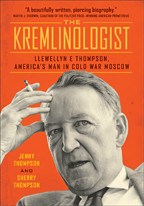
Reviews
In this extraordinarily thorough and insightful study, Fainberg identifies the similar approaches and practices used by Soviet and U.S. foreign correspondents reporting from each other's countries during the Cold War.
The research for this book is impressive.
This book is a joy to read; it's so good that I found myself reading it slowly, with care. Incredibly well researched and beautifully written, it constructs a compelling argument that will make a significant contribution to the scholarship on Cold War history, media history, and present debates about the origins of the 'post-truth' universe that we inhabit today. The first book to look closely at how the Soviet Union and the United States talked about each other in the mainstream press for the duration of the Cold War, this truly transnational volume draws on innovative sources to reveal how ideology played a critical role in shaping correspondents' international reporting.
This ambitious, innovative book reveals the inner mechanisms of ideology as well as propagandistic constructions on both sides of the ideological 'frontlines' between East and West. Dina Fainberg provides a fresh new angle on the topic; her conclusions are well elaborated, thought out, and very convincing.
Book Details
Note on Transliteration
Introduction. A Battle of Words
Part One. Spiers versus Liars, 1945-1953
Chapter 1. Making "Soviet Restons"
Chapter 2. The Heralds of Truth
Part Two. Pens instead of Projectiles
Note on Transliteration
Introduction. A Battle of Words
Part One. Spiers versus Liars, 1945-1953
Chapter 1. Making "Soviet Restons"
Chapter 2. The Heralds of Truth
Part Two. Pens instead of Projectiles, 1953-1965
Chapter 3. Overtake America
Chapter 4. In Sputnik's Shadow
Part Three. Your Fight Is Our Fight, 1965-1985
Chapter 5. Notes from the Rotten West
Chapter 6. Reports from the Backward East
Part Four. A Moment of Truth? 1985-1991
Chapter 7. Cold War Correspondents Confront Old and New Thinking 00
Conclusion. Us and Them
Acknowledgments
Abbreviations and Archives
Notes
Bibliography
Index





